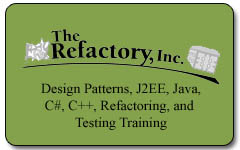The following is a quote I received from Ralph Johnson that in my humble opinion is a good brief description of MetaData.
MetaData is just saying that if something is going to vary in a predictable way, store the description of the variation in a database so that it is easy to change. In other words, if something is going to change a lot, make it easy to change.
The problem is that it can be hard to figure out what changes, and even if you know what changes then it can be hard to figure out how to describe the change in your database. Code is powerful, and it can be hard to make your data as powerful as your code without making it as complicated as your code. But when you are able to figure out how to do it right, metadata can be incredibly powerful, and can decrease your maintenance burden by an order of magnitude. Or two.
The era when business rules were buried in code is coming to an end. Today, users themselves often seek to dynamically change their business rules without the writing of new code. Customers require that systems are built that can adapt more easily to changing business needs, that can meet their unique requirements, and can scale to large and small installations.
Adaptive Object-Models successfully confront the need for change by casting information like business rules as data rather than code. In this way, it is subject to change at runtime. Using objects to model such data and coupling an interpretation mechanism to that structure, we obtain a domain-specific language, which allows users themselves to change the system following the evolution of their business.
A system with an Adaptive Object-Model has an explicit object model that it interprets at run-time. If you change the object model, the system changes its behavior. For example, a lot of workflow systems have an Adaptive Object-Model. Objects have states and respond to events by changing state. The Adaptive Object-Model defines the objects, their states, the events, and the conditions under which an object changes state. Suitably privileged people can change this object model “without programming”. Or are they programming after all? Business rules can be stored in an Adaptive Object-Model that makes it easy to evolve the way a company does their business.
